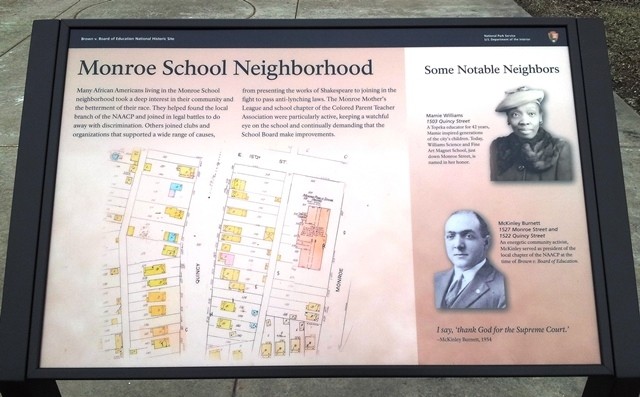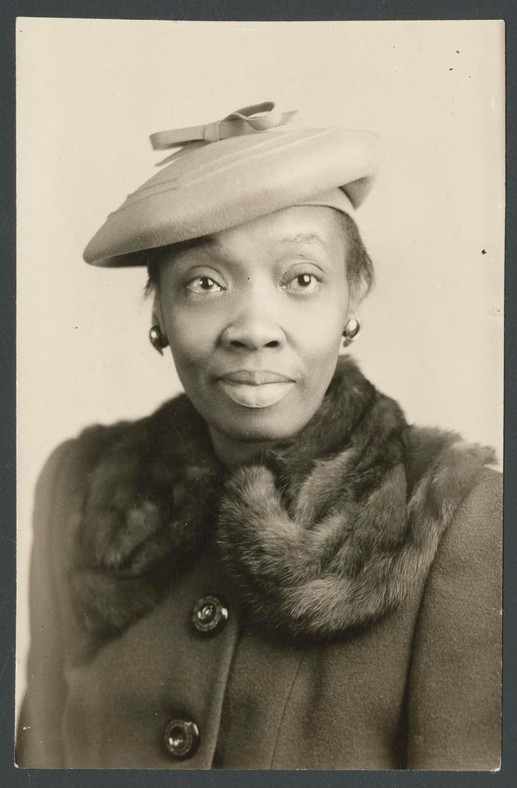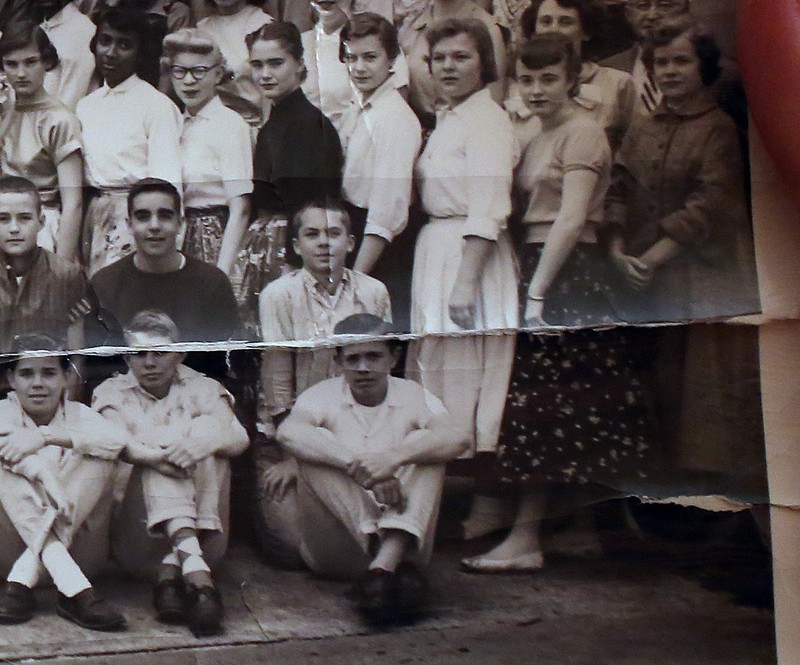Monroe School Neighborhood Historical Marker
Introduction
Text-to-speech Audio
This historical marker is located just south of Monroe Elementary School, which was the epicenter of the fight to end segregation in Topeka. The Topeka case became one of five school integration lawsuits that were combined into Brown vs. Board of Education. The marker includes a small map of the neighborhood and highlights some of the active educational, civil rights, and cultural organizations. The marker also includes photos of two community leaders: McKinley Burnett, who led the local chapter of the NAACP during the years when Brown v. Board was being, and Mamie Williams, an educator who lived near the school and taught for 42 years.
Images
This historical marker is located next to the historic Monroe School

Mamie Williams was an educator in the neighborhood for decades

Alice Lee Monroe Elementary 2nd Grade 1949
.jpg)
Alice Lee Crane Jr. High Topeka, KS

Backstory and Context
Text-to-speech Audio
This marker is one of several near the school that would become the centerpiece of the landmark 1954 case Brown v. Board that would declare school segregation unconstitutional. The case took over two years before it reached the Supreme Court. Despite the victory, the court decision led to additional court cases in the decades that followed. The first case, known as Brown II, led to the court declaring that integration must proceed "with all deliberate speed,” in 1955. While the court meant that cities needed to rapidly begin desegregating their schools, many school districts interpreted the 1955 ruling as offering a path to move as slow as possible by citing logistical challenges.
While integration moved slowly in some places, Topeka school officials had already been making plans to end explicit segregation before the case. One of the challenges in Topeka and elsewhere was the pattern of residential segregation and the desire to maintain local schools. This marker shares information about the neighborhood around Monroe Elementary, which included teachers and a variety of other professionals along with community organizations. The neighborhood was also home to several organizations of mothers and parents that were active in supporting the school.
One of the nearby families had a child who challenged the very idea of racial classification. Alice Lee lived in the area, and she was born with albinism, meaning that she was an African American who appeared white. She was sent to Monroe Elementary School beginning in 1947. Her school is now a museum, and Alice Lee is pictured in the foyer in a second-grade picture dated back from March 3, 1949. Alice later became an educator.
Alice Lee was in the sixth grade when Brown v. Board was decided. Alice was born with albinism, causing her skin to have very light pigmentation. Based on her address, her home school would have been Van Buren Elementary School if she was classified as white. Alice later stated that without the African American teachers she had at Monroe Elementary School, she would have never been able to become an educator herself. This marker demonstrates the importance of those teachers both before and after Brown V. Board was decided along with the history of the neighborhood that supported those teachers.
Sources
Clarkin, Mary . Alice Lee: Living Without Anger , USA Today Network. Accessed December 15th, 2023. https://stories.usatodaynetwork.com/brownvboard65/alice-lee/ .
Brown V. Board of Education 1954, Milestone Documents. Accessed December 15th, 2023. https://www.archives.gov/milestone-documents/brown-v-board-of-education.
https://www.hmdb.org/PhotoFullSize.asp?PhotoID=302147
USA Today Network
USA Today Network
